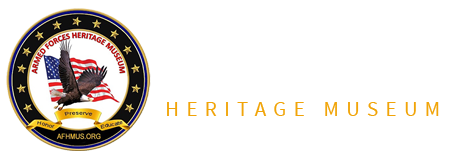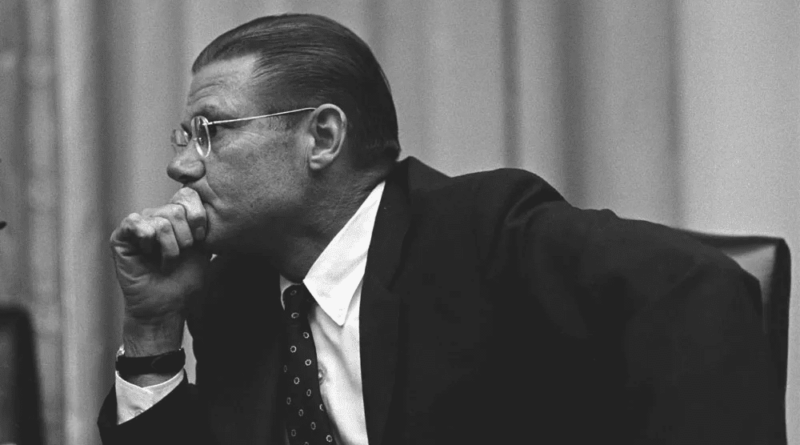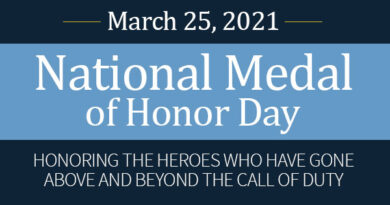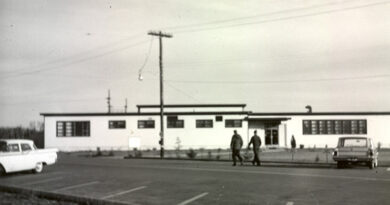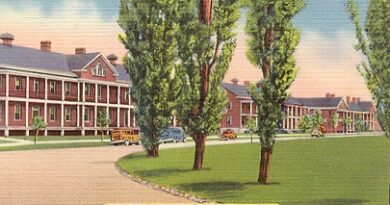Eyewitness Account of Robert McNamara’s Folly at Strategic Air Command, 1964
written by Bob Von Bargen
My experience with the US Air Force Strategic Air Command, or SAC, began in January 1960 when I reported for duty in the 509th Air Refueling Squadron at Pease Air Force Base in New Hampshire. The squadron flew the obsolete Boeing KC-97 tanker.
The following year in January 1961, Robert McNamara became Secretary of Defense, initiating numerous changes in the military, most of them awful.
McNamara had been one of the whiz kids at the Ford Motor Company. He was a strong-willed analytical executive. He believed that everything could be quantified. In time, his effort to reduce management to a numbers crunch hit the Strategic Air Command with a disastrous program called the Management Control System, or commonly called the MCS system.
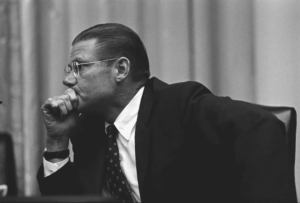
MCS attempted to manage military operations by counting and valuing events. Air crews received points for activities occurred during flight missions. Points were awarded for on-time takeoffs, heavyweight takeoffs, air refueling rendezvous, fuel offloads, navigation legs, approaches, landings, etc.
Needless to say, the more dangerous flight activities received the most points. Crews were rated and promotions were predicated on how well crews scored on their accumulation of points.
Commanders depended on high point accumulation within their total command to ensure any opportunity for their promotion.
It was a horror show that brought out the worst in people and led to catastrophic lapses in integrity from general officer right down to the basic airman.
One captain at a wing commander’s call stood up and flatly stated the MCS system was an inverse ratio of a crew’s integrity. He had to put in his papers for separation before making that bold statement.
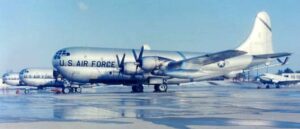
In another incident, my wing commander at the 509th bomb wing, Colonel James Keck was relieved of command when he protected an officer who questioned the efficacy of the MCS system. Jim Keck survived to retire as a three-star general. This man had great integrity.
The flight activities which garnered the most points in the least amount of time soon dominated mission scheduling. What had been routinely safe operation now became a nightmare. A formation of four to six aircraft loaded with maximum gross weight rolled down the center line of the runway and took off at 15 second intervals. This dangerous practice was designed to get airplanes positioned in alert status off the ground quickly in the event of an attack on the nation.
No one questioned the need to be proficient in this maneuver. What crews objected to was to risking their lives by doing it on every mission.
Then some genius decided to award even more points if it was done at night. As a result, we became midnight fliers. Of particular concern was the issue of extremely turbulent air encountered by planes further back in the takeoff roll. The furious swirling air churned by the propellers of the preceding aircraft made pressure instruments unreliable. Pilots could do little more than struggle to hold the wings level by using the artificial horizon. It was the only reliable flight instrument available.
They strained to control the violent gyrations as 100 tons of aluminum and aviation fuel bucked around in the blackness of the night.
The four-engine Pratt Whitney 4360 engines strained at maximum effort to keep the airplanes flying. High power settings had to be maintained to sustain a climb at these heavy weights. It took over two hours to climb to 19,000 feet.
The Stratotanker reached cruise altitude time to rendezvous with the bomber and initiate the refueling. As they tried to hook up, the tanker was flying as fast as it could while the bomber was flying at speeds that they could barely stay in the air.
KC-97s had to descend to maintain the airspeed needed to refuel the bombers. Consequently, tanker engines ran continuously at maximum power for three or more hours on every mission. Engine failures were common. If a crew returned with all four engines turning, we had a crew party.
In 1964, I upgraded to flight examiner and was promoted to a position at wing standardization. My crew was invited to attend a “First Team” briefing. These were the top crews in the Strategic Air Command. The keynote was with General Thomas S. Power, then Commander in Chief of the Strategic Air Command, headquartered at Offutt Air Force Base in Nebraska.
This meeting was an eye-opener. The large audience in a spacious auditorium consisted of lead and standardization crews from every wing in SAC. They were select crews coming from B-47 and B-52 bombers, and tanker crews from KC-97s and the newly assigned KC-135s that were replacing the 97s.
As we waited for General Power to arrive, a Lieutenant Colonel spoke to the assembly. He told us what the General wanted to hear and cautioned us not to ask or say anything that disagreed with the published SAC party line.
When General Power did appear for the interaction with his crews, there was little controversy. General Power proudly boasted that he “talked with his crews.” Unfortunately, the air crews knew that it was a career killer to tell him what he needed to know.
During a breakout session, my boss, the Chief of Tanker Standardization, Major Wilbur Moore addressed the problems generated by the MCS system.
Major Moore was a soft-spoken, grandfatherly officer with considerable flying time and air refueling experience. He requested that SAC consider reducing the number of minimal interval takeoffs of the KC-97 crews were required to accomplish under the current MCS system. He documented incidents where aircrafts had narrowly averted a crash during these departures and the imminent danger posed by the high engine failure rate.
It was a well-reasoned presentation that stressed the hazards our wing had experienced and recognizing the pending phase-out of the KC-97 as the new KC-135s arrived from Boeing.
It was a well-reasoned presentation that stressed the hazards our wing had experienced and recognized the pending phase-out of the KC-97 as the new KC-135s arrived from Boeing.
General John Dale Ryan, SAC’s Vice Commander, assailed Major Moore with vengeance. He condemned him for suggesting that requirements be lowered in any way and ridiculed him for making this request. It was clear that these folks had their ideas written in stone and nobody was going to change anything.
Major Moore sat down after receiving a thorough tongue lashing. It was an ugly episode for those who worked for him and respected him.
On the flight back to Pease, I contemplated pursuing a job with the Air Force Reserve that my copilot had told me about. I concluded that the folks in SAC were out to kill someone, and it probably would happen soon.
I applied to become an Air Reserve Technician, a civil service job that required membership in the Air Force Reserve. It was a full-time flying position. I mailed in my resume and was hired by the troop carrier wing at the Greater Pittsburgh Airport.
For the next 24 years, I would witness what an Air Force command with dedicated people who were not intimidated into doing something unsafe could achieve. The skilled citizen airmen of the Air Force Reserve excelled while maintaining extraordinary morale. In a few years, the Reserve Forces grew to comprise over 50% of the nation’s airlift and air refueling capability.
On November 5, 1964, I left Pease Air Force Base for my new job in Pittsburgh with my wife and children in the car. I drove out the South Gate on my way to what is now I-95. I looked over my shoulder at the approach lights at the end of the runway and thought, “you didn’t kill me.”
Not 30 minutes later, I heard on the car radio that a KC-97 at Pease involved in a heavyweight minimal interval takeoff had lost an engine and had crashed into those lights at the end of the runway.
All five crewmen aboard were killed. I later learned that it was number four of a five ship cell. Number five had flown directly through the fireball and had miraculously escaped.
Two civilians, a mother and her daughter, were slightly burned when the accident occurred. They had been sitting in a car on Route 101 watching the aircraft take off.
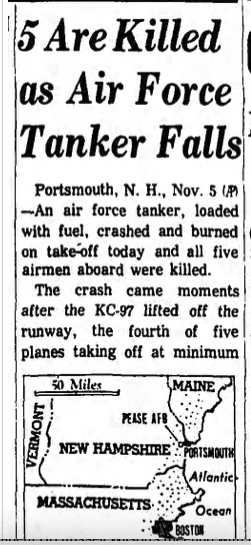
Major Moore was right. McNamara, Ryan, and the MCS system were wrong. SAC leadership recanted, and the KC-97 minimal interval takeoffs were phased out.
Another major factor in SAC’s decision to pull back on MCS was a series of B-47 crashes around the same time. The bombers were experiencing similar problems with MCS.
General Ryan moved up to become Chief of Staff of the Air Force.
Robert McNamara continued his disastrous Pentagon reign and subsequently mismanaged the Vietnam War until 1968, where he revived MCS with his infamous “body count” system.
I don’t know if Major Moore was ever promoted; and unfortunately, that flight crew was needlessly dead. I am thankful that I did not end up at the end of the runway as one of McNamara’s Strategic Air Command statistics.
In memory of the men of the 100th Air Refueling Squadron killed in the November 5, 1964 crash of the KC-97 at Pease Air Force Base:
(Pilot) Capt. Robert Louis Thompson, 33, of Vernon, Connecticut.
(C0-Pilot) Capt. Michael Peter Valavon, 27, of Jersey City, New Jersey.
(Navigator) 1st Lt. Larry C. Dennis, 25, of Richmond, Virginia.
(Boom Operator) S/Sgt. Gerald William Schulz, 32, of Milwaukee, Wisconsin.
(Flight Engineer) S/Sgt. Richard Earl Towle, 36, of Kittery, Maine.
